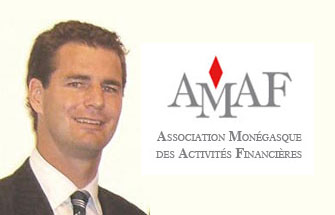
Texts introducing mandatory professional certification in Monaco were published in April 2013. The first class graduated in June. A progress report with Mr. Anthony Stent-Torriani, Vice-President of AMAF and Chairman of the Strategic Council for Attractiveness of Monaco’s Finance Committee.
Can you remind us how certification started in Monaco?
Certification for investment professionals was introduced in France in July 2010 by the AMF (Autorité des Marchés Financiers – French financial markets authority). It would have been easy to just copy it but we wanted to create specific certification for Monaco that was tailor-made to the professions in its financial centre. In this project, on the AMAF President Mr. Etienne Franzi’s initiative, we have been greatly helped by the Minister of Finance and Economy, Mr. Jean Castellini, and by the CCAF (Financial Activities Audit Committee).
How does the certification take place?
Like all courses leading to a qualification, with a course validated by an examination.
The course lasts 44 hours, with 14 hours dedicated mainly to ethics, law and compliance, and 30 hours to studying the more technical part of our business.
IUM (International University of Monaco) provides the training, in collaboration with IntellEval Monaco, a centre of expertise in compliance. Lectures take place on Fridays, in 4 hour blocks over 4 months. 30 students per course can be trained.
And then there are the examinations…
Yes, basically a 3 hour multiple choice test. There are 100 questions, 30 of which are on ethics and 70 on the technical part. Students need to achieve a 70% average to pass. The first class performed well as the average was 75%.
What if they fail?
Firstly I would like to congratulate those who passed. But if a student fails, they can start again. There is a new course every 6 months. People who are obliged to take the examination due to their profession can practice it for 12 months if they fail the tests. That gives them the chance to take the examination again during that period of time.
What are the students’ profiles?
We have little hindsight, but what is interesting is that you can take the certification because it is a requirement of your job, but also if you wish to have the financial centre’s culture. In the first course we had 18 students, aged around 35, all volunteers from various banks and management companies. Some were not obliged to take the examination but they did so. We had management assistants, compliance officers etc. It is very interesting for them - beyond what they learn, they build up a real network which can be useful in their careers later on.
The training is not expensive for this quality of studies: 1150 euro per student. I would like to take this opportunity to point out that registration for the new session is now open at IUM.
What are the possible developments?
Firstly it should be noted that given the developments in our professions and in regulation, certification is not only necessary but indispensable. And as the rules change every year, the examination questions are also changed every year. Over time one can imagine there will be several certification courses in accordance with the professions, rather than one single course. But whatever the developments, this certification is an incredible tool for the attractiveness of the financial centre. Qualification of its actors is crucial for its image. We are easily as qualified as elsewhere. This must be made known.





